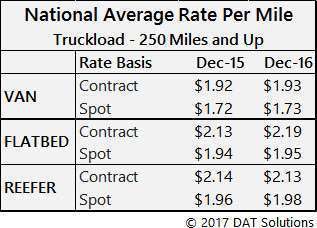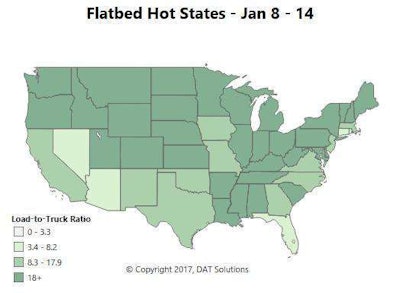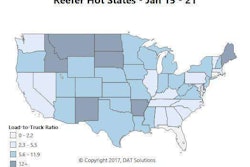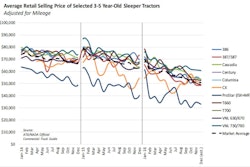Following an “18-month malaise” in freight sparked by the collapse in oil prices at the end of 2014, says DAT analyst Mark Montague, the freight recession is now officially over. Freight volume and rates have been generally reviving since May of 2016, but year-over-year comparisons didn’t turn “positive until August,” he adds. And “instead of tapering off after October, as retail freight did in years past, a boom market emerged for truckload transportation in November and December.
E-commerce was a major source of spot market freight for what is usually a quiet season, boosting truckload rates to a surprise peak in the last two months of the year,” illustrated in the chart below showing national average rates up in most segments, if slightly, in December compared to the same month in 2015.

Read more of Montague’s analysis via this link.
And as for the spot market at this very moment, it was a week of mixed activity for all three segments in a variety of locales, DAT’s Ken Harper says. While it’s the slow season for flatbeds, there’s been “significant activity in the energy sectors of Texas and New Mexico.” Flatbed freight movement along the Dallas to El Paso, Texas, lane is one route showing a boost with drilling activity in the vicinity of the endpoint. The lane was paying an average of $2.16/mile last week for flats. “You could speculate and say that natural gas was the driver because of the fuel needed for the lower than normal temperatures in California and the Northwest,” Harper adds, “but we don’t have any hard data on that.”

It might be spring before we start to see big improvements in a large number of places for flats.








